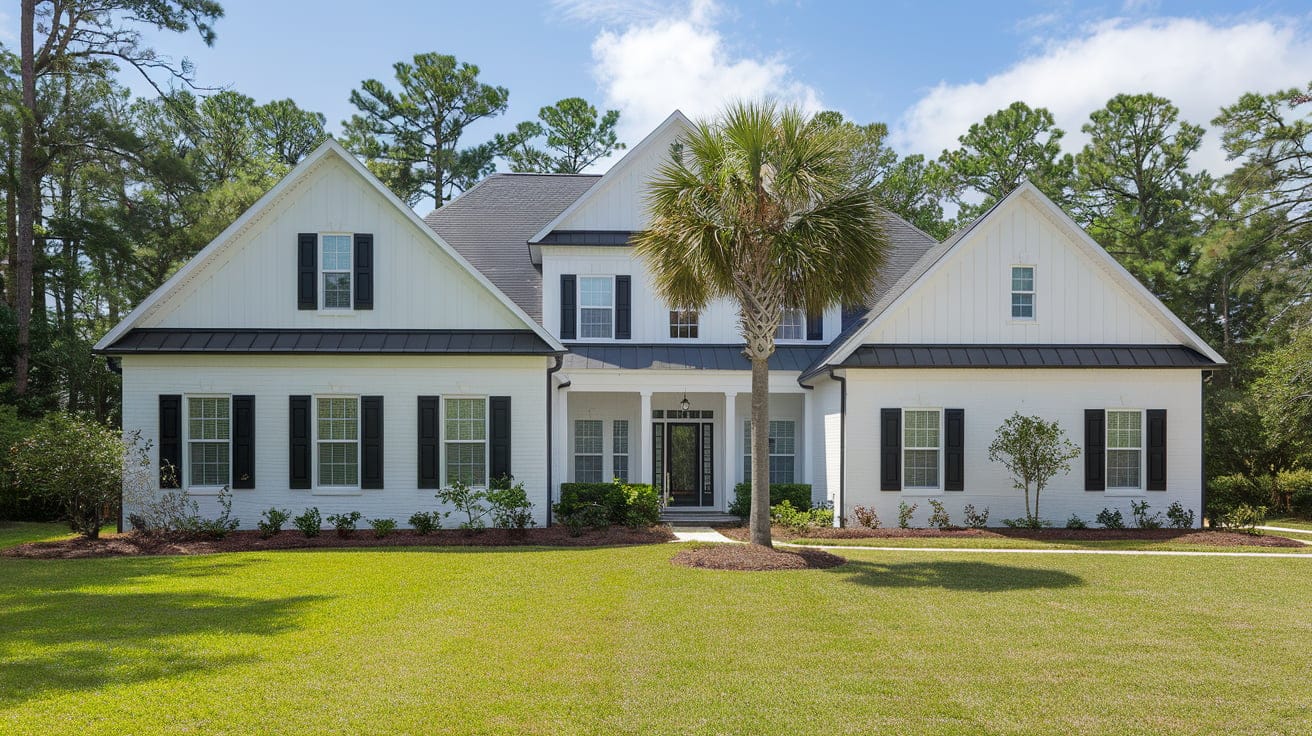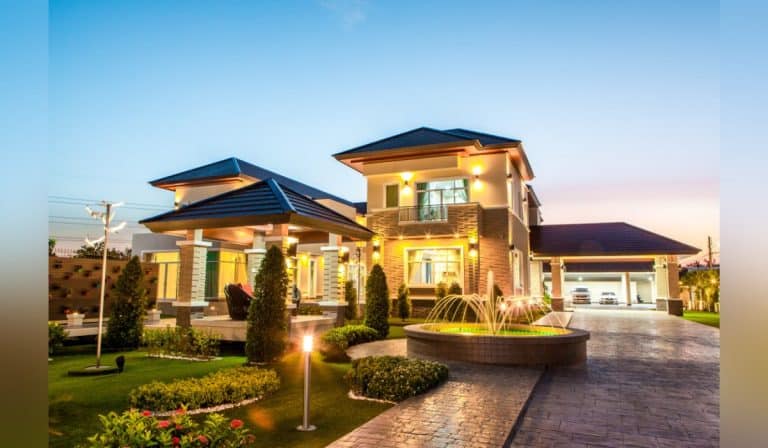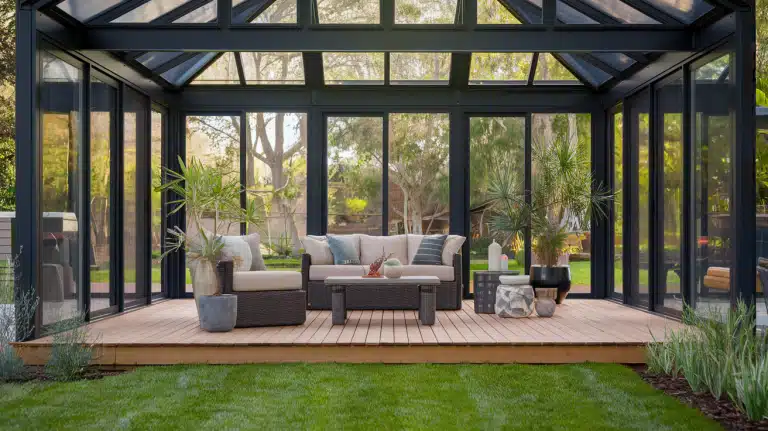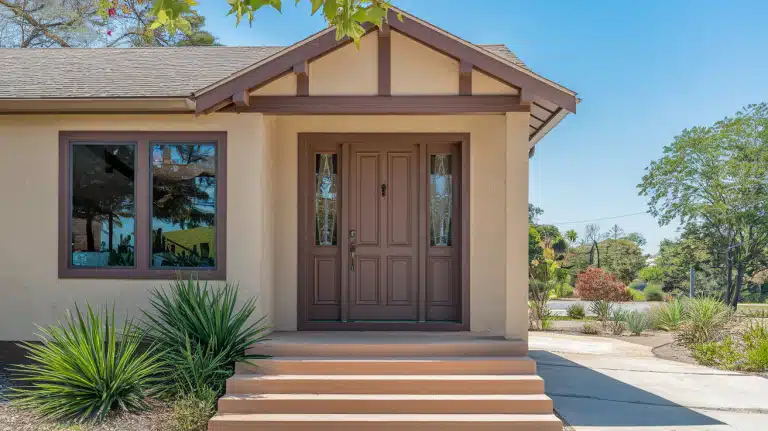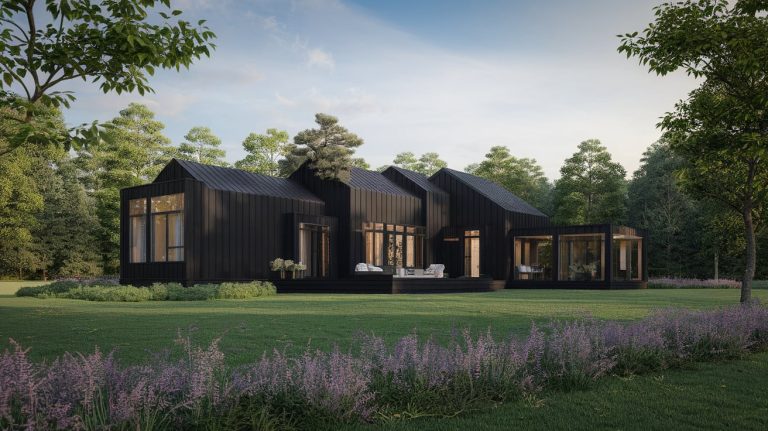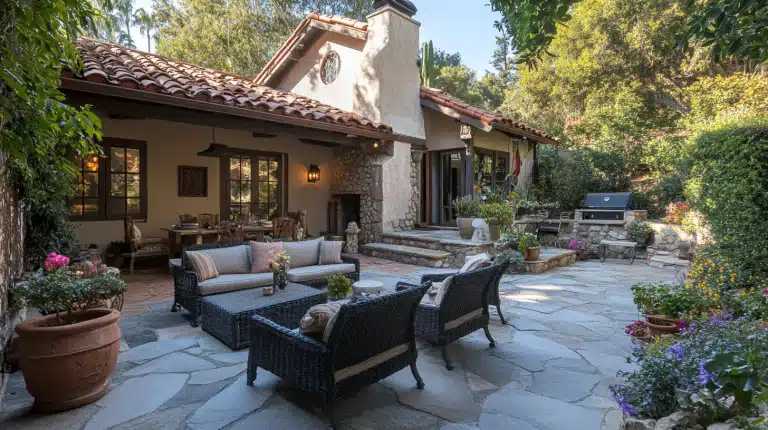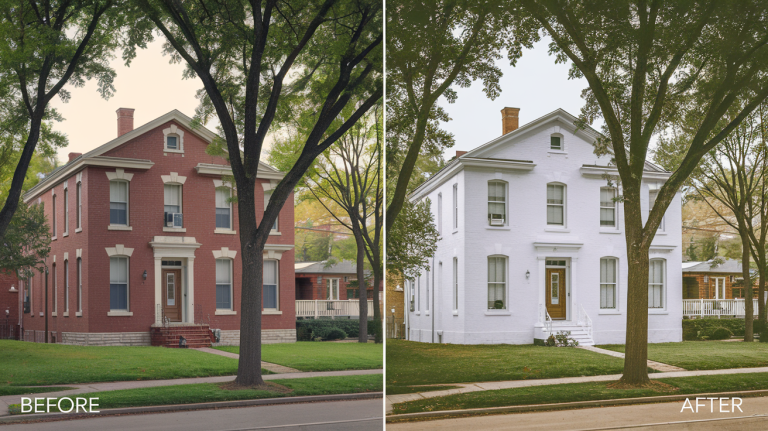Refresh Your Florida Home with Sherwin Williams’ Paint
Choosing exterior paint colors for a Florida home can feel overwhelming.
After years of working with homeowners, I understand their unique challenges. The intense sun, salty air, and high humidity can quickly make the wrong paint choice look tired and worn.
Here’s the good news: Sherwin Williams offers paint colors specifically formulated to withstand Florida’s tough climate and keep your home looking fresh for years.
I’ve helped countless homeowners transform their stucco homes with these reliable shades.
In this guide, I’ll share my top Sherwin Williams color picks that work beautifully on Florida stucco, show you exactly how each shade performs in different lighting conditions, and walk you through practical tips for selecting the perfect color for your home’s architecture and surroundings.
Why Sherwin Williams is the Best Choice for Florida Stucco Homes
Florida homes need paint that matches the state’s unique weather conditions.
Sherwin Williams has spent decades perfecting its exterior paint formulas, creating products that bond exceptionally well with stucco surfaces.
Its paints include advanced UV protection and special additives that resist mold and mildew, which is essential for Florida’s climate.
The brand’s proven track record in handling heat, humidity, and salt air makes it a reliable choice for Florida homeowners.
Importance of Choosing the Right Paint for Florida Homes
Florida’s climate presents specific challenges for exterior paint:
- Intense UV exposure can cause colors to fade quickly
- High humidity levels can lead to paint peeling
- Salt air in coastal areas can damage paint surfaces
- Frequent rain and moisture can create ideal conditions for mold growth
- Heat fluctuations can cause paint to crack or bubble
Selecting the right paint isn’t just about aesthetics; it’s also about protecting your investment.
Quality exterior paint is your home’s first defense against these environmental factors.
Best Sherwin Williams Exterior Colors for Florida Homes
1. Timeless Neutrals for a Classic Look
Alabaster (SW 7008)
This soft, warm white has become a favorite for Florida homes.
It offers a clean look without appearing stark or clinical. With slight beige undertones, it helps mask dust and maintains its fresh appearance between cleanings.
Its light reflective value makes it perfect for keeping homes cooler in the Florida heat.
Oyster White (SW 7637)
A light neutral with subtle gray undertones, Oyster White creates a welcoming exterior that fits well in any neighborhood. It pairs beautifully with darker trim colors and natural stone accents.
This shade handles bright sunlight exceptionally well, maintaining its true color without yellowing.
2. Coastal and Tranquil Hues
Sea Salt (SW 6204)
Despite its name, Sea Salt isn’t just another blue-green color. This gentle, nature-inspired shade captures the essence of coastal living without being overly beachy.
It changes subtly throughout the day, showing more green in bright sunlight and blue in shaded areas.
The color works particularly well on Florida stucco homes, creating a soft, lived-in look that ages gracefully.
Oyster Bay (SW 6206)
This medium-toned color combines gray and green notes to create a sophisticated coastal feel.
It stands up exceptionally well to bright Florida sunshine and maintains its color integrity even in salt-rich coastal environments.
The shade provides enough depth to highlight architectural details while remaining subtle enough for large exterior surfaces.
How Lighting Affects Paint Colors on Stucco Homes
1. Natural vs. Artificial Lighting
Natural lighting
Natural daylight shows paint colors in their truest form, but Florida’s intense sunlight can significantly impact how colors appear on stucco surfaces.
Morning light tends to cast a blue tone, while afternoon sun adds warm golden notes to paint colors.
Consider how your home looks during different times of day when selecting your color.
Artificial Lighting
Artificial lighting becomes important in the evening hours. Different types of exterior lighting can alter color appearance:
- LED lights can make cool colors appear crisper
- Incandescent bulbs add warmth to any paint color
- Halogen lights create sharp shadows on textured stucco
2. The Role of North vs. South-Facing Walls in Color Shifts
North-Facing Walls
These surfaces receive less direct sunlight, making colors appear slightly cooler and darker.
Light neutrals like Alabaster and Oyster White help brighten these areas.
When using darker shades like Oyster Bay on north-facing walls, consider going one shade lighter to compensate for reduced light exposure.
South-Facing Walls
These areas receive the most direct sunlight in Florida. South-facing surfaces appear brighter and more intense.
Sea Salt shows its true color best on these walls, while deeper shades might look lighter than expected due to intense sun exposure.
Due to these lighting variations, paint colors can appear different on each side of your home. Testing your chosen color on multiple surfaces helps ensure satisfaction with the final result.
Apply sample colors to all sides of your home and observe them at different times of the day before making your final decision.
Application Tips for Florida Stucco Homes
1. Surface Preparation
Getting your stucco surface ready is essential for long-lasting results. Start with thoroughly inspecting your walls to identify any cracks, chips, or damaged areas.
Clean the surface using a pressure washer to remove:
- Built-up dirt and grime
- Loose paint particles
- Mold or algae growth
- Salt deposits common in coastal areas
Allow 24-48 hours for the surface to dry completely before making repairs. Fill any cracks with quality stucco patching compound and let it cure according to manufacturer instructions. Sand-patched areas to match the surrounding texture.
2. Choosing the Right Paint Finish
For Florida stucco homes, the finish you select matters as much as the color. Flat finishes can help hide surface imperfections but may show water marks more easily. Satin finishes offer a good balance:
- Better moisture resistance
- Easier to clean
- Subtle sheen that enhances curb appeal
- Good UV resistance
Painting Techniques for Long-Lasting Results
The right application method ensures your paint job stands up to Florida weather:
Start Early: Begin painting early in the day when temperatures are moderate. Avoid painting in direct sunlight or when rain is expected within 24 hours.
Use Quality Tools:
- Large rollers with thick nap (at least 1-inch) for textured stucco
- Extension poles for reaching high areas safely
- Quality brushes for trim and detail work
Apply Multiple Coats:
- Start with a high-quality primer specifically formulated for stucco
- Allow proper drying time between coats
- Apply two full coats of paint, working in small sections
- Maintain a wet edge to prevent lap marks
Apply paint generously to ensure even coverage, but avoid letting it pool in textured areas. Work from top to bottom in manageable sections, keeping a consistent application pattern throughout the project.
Let the final coat dry completely, usually for at least 24 hours, before exposing it to moisture or heavy dew, which is common in Florida evenings.
Conclusion
Selecting the right exterior paint color for your Florida home goes beyond personal preference.
It’s about finding shades that maintain beauty despite intense sunlight, high humidity, and salty air.
Sherwin Williams colors like Alabaster, Oyster White, Sea Salt, and Oyster Bay have proven capable of handling Florida’s demanding climate while adding lasting charm to stucco homes.
Remember that natural light plays a crucial role in how these colors appear throughout the day.
By understanding how your home’s orientation affects color appearance and testing samples on different walls, you’ll find the perfect shade that looks beautiful year-round, protects your home, and maintains its fresh appeal in Florida’s unique environment.

